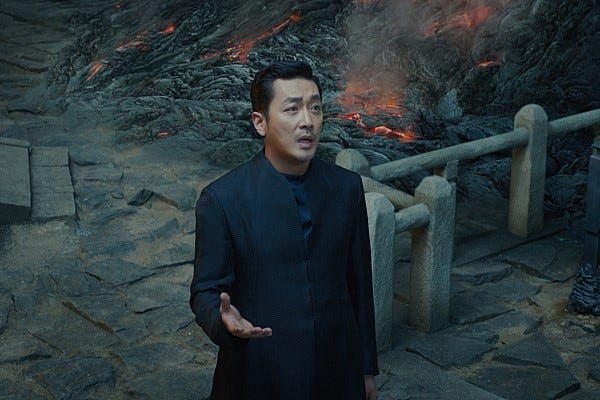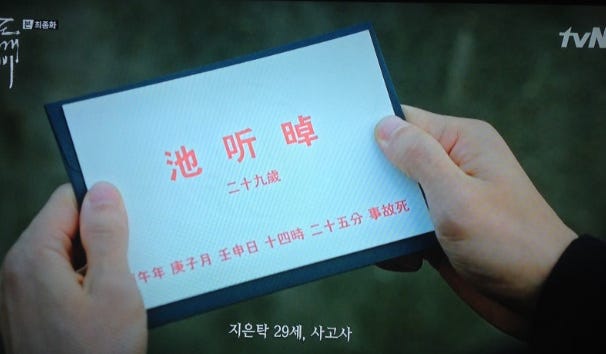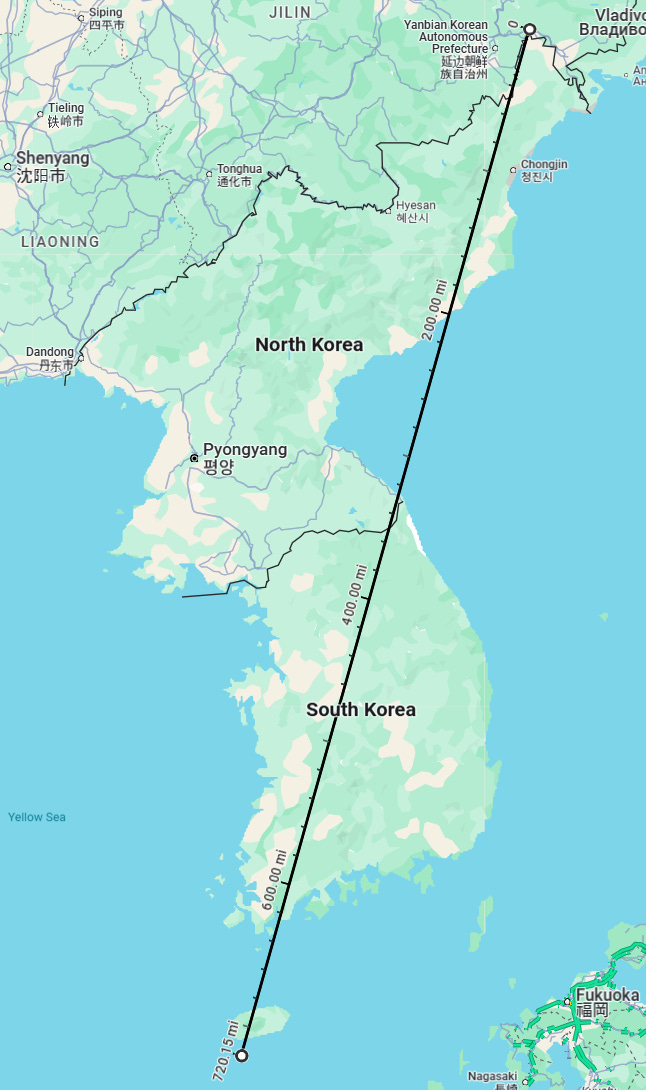Korean Concept of "the World of the Dead"
Well, this is a heavy subject, ain’t it? I’ll try to tackle it from a layman’s perspective (not that I know any different) so that you can get an overall picture of it, instead of getting bogged down to the tiniest of all the philosophical and religious nuances.
Vocabulary first. Both of these words are pure Korean, meaning that they cannot be written in Chinese.
이승 (eeh-seung): literally “this life” = world of the living
저승 (jeo-seung): “that life” = world of the dead
Right off the bat, I’ll point out the fallibility of the almighty Google.
This is patently wrong. Jeoseung encompasses all parts of the world for the dead—heaven, hell, and somewhere in between1.
Once you grasp this very old Korean concept that has evolved over a few millennia influenced by Taoism and Buddhism, a lot of the K-drama and movie plots, not to mention the myriad Korean myths, start making sense right away. The story of 도깨비 and 신과 함께 come to mind.
So, you’re born into and live in 이승 and when you die, your 혼 (hon = your spirit/essence/soul) separates from your physical body and move to 저승 (“that life”). But every now and again, there are those who are caught between the world of the living and the world of the dead. This particular “no man’s land,” if you will, is where a lot of the most interesting and horrifying Korean mythological stories are set in. (We’ll get to it someday—I need to brush up on the details before I write about them.) When Koreans say that they’ve seen ghosts, they’re really talking about these spirits wandering about in this “between world.”2
Curiously enough, both Western and Eastern cultures feature a river, or body of water, that divides this world from that world. River Styx vs 삼도천 (Sam-do-cheon, “Three Path River”).

But I’m getting ahead of myself. Backing up a bit, the Korean brand of this world and that world (co-)exist in the same dimension, as told by the tale of Baridegi (바리데기).
In that previous post about Princess Bari and the origin of Korean shamanism, I skipped the part about Princess Bari’s journey itself to the netherworld. In the folktale, she travels 3,000-ri (~1,200km) “from the end of this earth” by land and another 3,000-ri by sea to reach the gates of the dead world—the “front” gates. Then, she has to sojourn through 10 hells and 84,000 smaller hells to reach the world of the dead proper.3 There’s no discussion of ascending to the heavens or descending into the underworld.
**note about the distance of 1,200km: in many Korean folktale stories, the distance of 3,000-ri (리) is often invoked to refer to somewhere far, far away or unreachable destinations. 10-ri = 4km. This may not sound like a long distance in today’s terms, but in the old days this was indeed a formidable distance. The most curious thing about this distance is that the northern tip of the Korean peninsula to the southernmost tip (Mara-do, south of Jeju-do) is almost exactly 1,200km. And this number had been in use for 2000 years before the current Korean border was established.
Just to conclude the thought on it, Sam-do-cheon is a river that separates the second hell and the third hell in the abovementioned 10-hell journey. One path leads to purgatory,4 one leads directly to heaven, and one leads to the most painful hell. (I’ll just leave it at that for now.)
As you can very well imagine, there isn’t a single unified theory on what 저승 looks like. There are a million different iterations of the world of the dead based on bits and pieces of Taoist, Buddhist and local shamanistic beliefs, but one common thread through all of them is this concept of 저승사자 (jeoseung saja).
Roughly translated as the Executioner (or Messenger) from 저승, this being is responsible for taking people of this world whose time has come to the other side—sort of like “angel of death” in the western tradition. He/she takes orders from his/her boss who rules the fifth hell of the 10-hell framework briefly discussed above. (Again, I’ll describe these in more detail in a later posting. It’s actually very interesting.)
This 저승사자 has been made into countless K-drama and movie character for decades. Always portrayed as grim looking and dressed completely in black, they used to look like this on the TV screen…
… or something like this and scare the crap out of people.
Then, the very popular K-drama named Dokkaebi changed the image of this angel of death into…
… a dreamy handsome man for the ladies.
But this 저승사자, unlike the popular notion, is described as a compassionate being. Although he does take your life, he will be your guide through the treacherous journey to and through 저승 and help your soul to get to the final destination, wherever that might be. Think of 저승사자 as sort of a defense attorney who sometimes use bribe (not money but a part of your soul or memory5) to get through to the next stage of hell. The world of the dead was made to be much like the living human world.

Again, as it was shown in the drama Dokkaebi, this 저승사자 goes strictly by whose name comes up in the book of death on a given day. Interestingly, there are many regional folktales about how some (rich) people cheated death by pretending to be someone else or paying someone (poor) off to pretend like him/her. So, the plot of the main female character in Dokkaebi escaping death isn’t (I don’t want to say historically accurate but…) completely without precedents.

Stay tuned for more. At least it will help you understand the stories of K-dramas and movies a little better.
Korean (East Asian) concepts of heaven and hell are slightly different from the Biblical usage of the word in that they’re based on Buddhist beliefs.
I’ll get to this in a later posting. Quite interesting.
All of these numbers and the concepts of hell are from Buddhist influence. I will definitely have a separate posting on the 10-hell concept later.
Different from the Judeo-Christian/Dante’s world of purgatory. No English equivalent.
very hard to explain…










